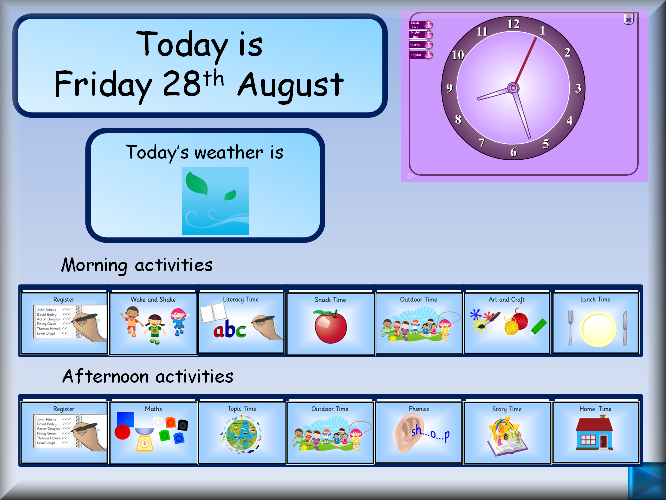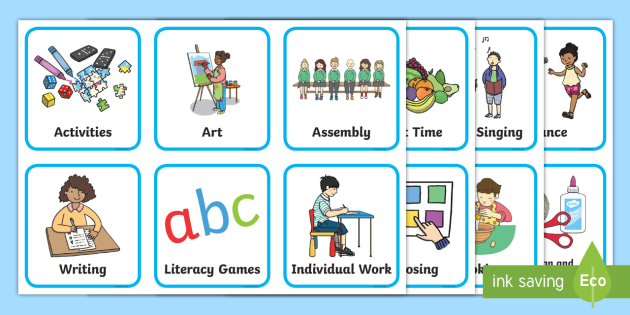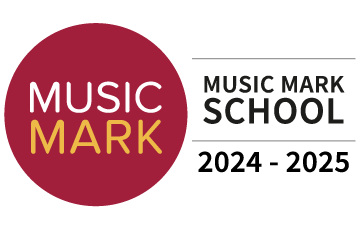Using Visuals to Support Your Child
What is a visual resource?
• Anything you can look at that helps to improve communication and understanding.
• Everyone uses visuals whether you have autism or not – for example if you use a diary, this helps you to remember and understand what you are doing from day-to-day. If you did not have a diary to look at, you would probably forget what you are meant to be doing each day.
• Road signs, maps and sat-navs are another example of how we all use visuals. It would be very difficult to navigate our way to new places if we did not have access to these types of visuals which help to guide us.
• Visual resources do not need to be fancy – anyone can make them. Visuals can be as simple as drawing stick-men or writing a list to remind someone what they need to do.
• The most important thing to consider when using visual resources is that they are tailored to the individual.
Why do visual resources help children?
• Children can be ‘visual thinkers’ so information can be easier to process and understand if it is presented visually.
• Visuals are more permanent than words. Once something has been said it can quickly be forgotten or misinterpreted, whereas a visual will always stay the same and can be referred to as many times as needed.
• Some children can find verbal communication difficult to understand because there are so many different bits of information to process all at once. Visuals allow a person to focus just on what is being communicated, rather than having to decipher the tone of voice, eye contact and body language etc.
• Visuals can help children to express their needs – if someone struggles to communicate verbally, visuals can be used to help them tell others what they want and need.
• Visuals can help to increase independence – for example if a person struggles to get themselves dressed in the mornings, try using a visual prompt to help them understand what they need to do.
How can visuals help to reduce challenging behaviour?
• Some children crave predictability and structure. When there is not enough structure children can become anxious. Visuals help to provide this structure and predictability, which reduces anxiety.
• Challenging behaviour can occur when a person cannot express their needs or doesn’t understand what is being communicated to them – visuals can help with this.
• Visuals can be used to help children understand how they are meant to behave and what is expected of them.
Using visual resources
• Visuals that incorporate a special interest can help to motivate and reinforce the expected behaviour.
• Resources need to be tailored to the individual. Some children will understand symbols and drawings, but children who are more literal may need real life photographs. What works for one person, won’t necessarily work for someone else.
• Visuals can take a lot of ‘trial and error’ – if it doesn’t work, you might need to adapt it.
• Try and incorporate the person’s special interest where possible – this will help motivate them to want to use it.
• Try and involve the person who the visual resource is for. They are more likely to understand it if they have helped to create it.
• Using visual resources can take a lot of time and patience but don’t give up! Sometimes it may take weeks or months to work.
Timetables
• Can help to reduce anxiety by providing structure and predictability.
• May help children who ask repetitive questions – if they have a timetable to look at, they can refer to this rather than asking what they are doing and when they are doing it.
• Different timetables work for different children – some children like to know one or two steps ahead of what will be doing, others may need preparation a few days in advance.
• Don’t put times on the timetable unless you can guarantee it will take place at that exact time – it is better to just put activities in the order that they will be doing them or to give time frame.
• Teenagers and adults may prefer a more discreet timetable – in this case they can put reminderson their mobile phone or use a diary or calendar.












